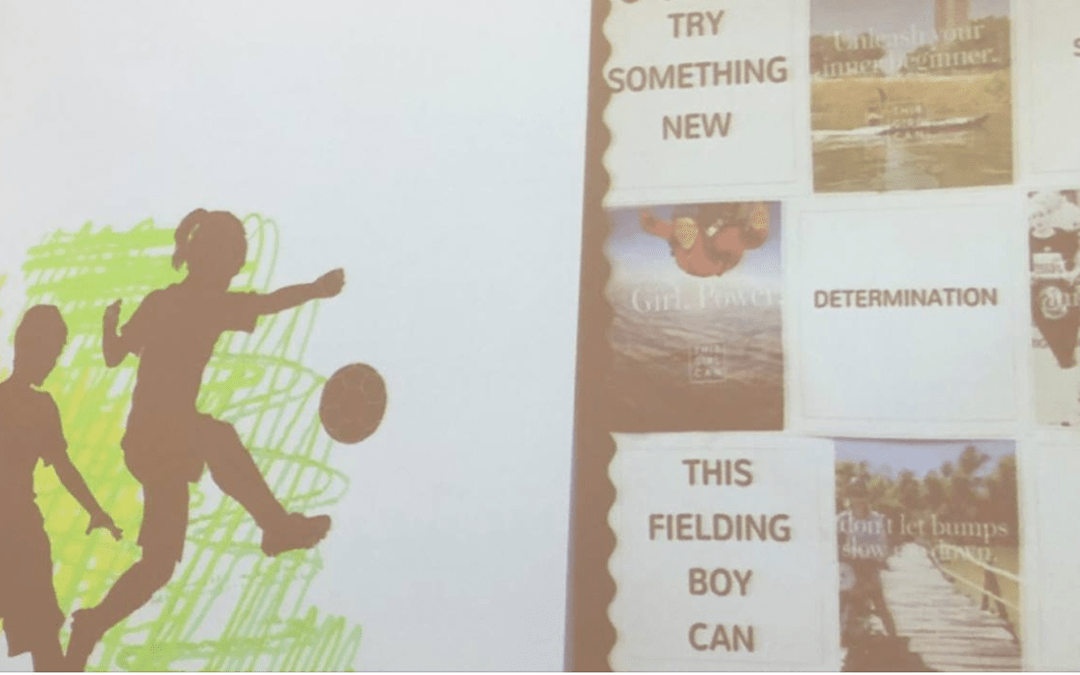
Helping Kids understand the Coronavirus
Hello, and welcome to another article of the HelpingKids Parent Academy series.
This is about the situation we are living in right now with the coronavirus pandemic. We’d like to give strategies to help our children make sense of what is happening. We wish we as adults could have a better understanding of what is happening, as it can be difficult to keep calm and explain it adequately.
HelpingKids. If you don’t know us at HelpingKids, we are life coaches for children. We have been supporting young people for ten years in London. We have also been helping parents and schools when going through difficult times like the Paris or London terrorist attacks or the tragedy of Grenfell Towers.
With a bit of luck, coronavirus will not affect you in a way similar to those situations, but there is understandable concern, especially for children.
If you read the news, you will see lots of suggestions already on what to do at home and keep your young ones entertained. This is not what we want to give you.
In this article, we want to provide you with my ideas on how to help children in three specific areas:

- How do we help children understand the situation? How can they make sense of people potentially being sick, especially their grandparents and relatives?
- How to help them accept that they might have to be confined to home with not much activity, friends and mental stimuli as they are used to.
- What is essential to consider when preparing yourself for spending a considerable amount of time in a reduced space with your children?
There may be many more questions, and we will not be able to cover everybody’s interests. Please do contact us (details below) and we will do our best to help.
How do we help children make sense of the situation?
Communication to children will vary according to age group. We see three key stages: below 6 years old, between 6 and 9 years, and over 10 years old.
If you have children in two or more of those stages, keep a consistent approach because they will talk to each other. If they find they are receiving conflicting information, it will create unnecessary worries. Also, your older kids must understand the different conversations happening so they can be consistent with what you are saying to the younger one(s).
Let’s start with the youngest group and work our way up.
Children below 6 years old
The youngest group won’t be too concerned with death or illness. They will be reasonably blocked from news and won’t have a lot of time for those. It will only become a problem as a reaction to the change of dynamics (no school, no clubs, no meeting friends). It is important to tell them that there is an illness going around. Don’t include adjectives such as ‘severe’ or ‘worrying,’ keep it neutral.
Tell them that we can have some little things inside us and not notice anything. We can give those things, the illness, to other people without realising it, and those people might become ill. So we can keep ourselves and others safe, we have to stay home and wash our hands, etc.
Use some physical items for children to be able to visualise what you are talking about. You could use a post-it note with a sad emoji on our clothes, or pretend their toys are actors. As we rub shoulders with others (or the toys shake hands), the post-it changes. If one of those people is ill, then the post-it note can make them feel worse.
Try not to personalise it (i.e. “people like your grandpa can get more ill”) because it might only cause unnecessary concern. Keep it reasonably neutral and external to them, using things like their toys to explain.
Also, explain that there are a lot of very smart and hard-working people (doctors, scientists, nurses, etc.) working to resolve this situation. They are the best in the world, and they are improving every day.
You could have a secondary army of toys, a lot bigger and definitely their favourite ones, facing the other toys (the ones with the post-it notes) and kicking them out.
The ‘three yes’ strategy
This idea is to increase their chances to agree with you. Ask your child three questions that will likely result in a ‘yes,’ and finally ask the one question you want them to agree with.
For instance:
- Do you now understand what I am trying to explain to you? (If they say no, go back to the explanation)
- We want everybody around us to be healthy, as well as we want to be healthy? Is that right?
- And we want to do what we can to help them be healthy?
- Do you now understand the importance of staying at home?
- Also, do you now understand the importance of washing your hands when we tell you?

As you can see, the strategy is reasonably straightforward, very visual and neutral in the tone. We are also keeping calm and showing our faith in the scientists and doctors as the good army to defeat the bad army.
Children 6 to 9 years old
Depending on their maturity, adapt the same script for the next stage. They might have some questions or have heard things in school. Keep it calm and confident and this will transfer to them.
Try a drawing game. They can draw the baddies (the virus) and how they spread around. Then they can draw the good guys, making them bigger and stronger than the baddies.
The child can rip up the drawing with the baddies and bin it. This can be a great exercise as well. You can refer back to washing our hands and binning the paper.
Children over 10 years
Older children are more conscious. They can benefit from the same explanation, but in a more adult way. If you have younger children, expose your older ones to the child-friendly version. Then have a separate chat with them to say “Is there anything else you want to know? Do you understand how important it is for all of us to keep healthy and help others be healthy?”
If you don’t have younger kids, try an age-relevant adult-to-adult conversation. They might not have all the vocabulary or ability to express themselves, but they can understand things about as well as you. They will know what a virus is and how it goes from person to person. They will have learned all this in school. If your school has given any specific information about coronavirus, please ask them for the script or ideas. The more consistent you are, the better.
It is essential to pay attention not so much about the illness or the virus, but focus on what they can do.
Pay attention to what they can do, not so much about the illness or the virus. They can exercise, wash hands, help with cleaning, ensure they don’t sneeze on their hands and keep their distance from people at risk.
It is critical to help the understanding of these children. Ensure they don’t feel too concerned. Focus on a simple routine and keep calm. Involve them in creating ideas to do at home or with neighbours. They might want to volunteer help to others. Ensure they understand personal safety recommendations and to try to co-ordinate with others doing the same. Rather than starting from zero, they might want to find out if somebody is doing it already.
Overall, they are mini-adults and can understand the situation. Help them focus on what we want to happen (hygiene, keeping healthy, helping each other) and be positive about the work that professionals are doing.
Limit listening or discussing COVID-19 news
We might want to listen to and discuss every piece of news that comes to us, have the TV on, or rant about what somebody has done. Shield kids as much as possible from over-listening. They will hear a lot of news whether you like it or not. Try to keep some time and space where you are not talking about it.
Visualise the situation with dots
Help children understand the proportion of the problem. We have done the ‘dot visualisation’ exercise below for children of different ages, and it works very well.
Important note: most of the data below for this activity is from:
https://informationisbeautiful.net/visualizations/covid-19-coronavirus-infographic-datapack/
We took the following data:
81% of people infected only see mild symptoms
14% of cases need hospitalisation (help)
5% of cases are important
There is a piece we don’t have which is the proportion of people who will contract it (symptoms or no symptoms) or not at all. We are assuming it is 50/50.

Dot visualisation
Ask the child to draw a dot for every person on a single piece of paper:
50 dots in blue (representing the proportion of people who will not contract the virus (This is the 50/50 number we are guessing)
40 dots in a different shade of blue: representing those that can have the illness but will virtually not notice anything or very little.
7 dots in green that represent people that might need help and be taken to hospital
3 dots in orange, representing people that need a lot of help.
They end up with a piece of paper full of blue dots with a few scattered green and orange dots.
Now, revert to the idea of how we are very lucky. We may be one of the blue dots, but it is vital to the green and orange dots that we stay at home, wash our hands and stay healthy.
This exercise (apart from distracting children by drawing dots) helps them put any situation in perspective.
So far, we have covered a lot of ideas on how to communicate the situation to children in a friendly way.
We have covered a lot about communicating the situation to children in a friendly way. Don’t shy away from the conversation but help them and yourself to keep calm and focus your energy on the crucial things.
We assume the vast majority of you reading this article will be “a blue dot” so no need to extend into what happens if your relative is taken to hospital. If you need help with this topic, please contact us (details below).

How to cohabit with young people for a long period
Many parents are planning games, activities and new things to do. There is plenty of great advice around, so we won’t cover that.
Here are five areas to consider. Personalise them for you and your child:
- Routines and structures. These are fundamental for any child. Routines and structures give them certainty and a feeling of safety. Aim to set them up as soon as possible. You can always change them, but do not wait until they happen by themselves. If this happens, your routines and structures will vary a lot from theirs.
If your child is young (under 10) create a visual representation for parts of the day, similar to what they have in school. One symbol for playtime, one for lunch, one for homework, one for sleep time. Then share it with them. You can move it around but aim to have similar structures every day. You can proactively use the time to learn something, draw, play an instrument, improve a language, etc.
Do not make routine the only rule. Make sure you bring variety, have a picnic on the floor, take half-day off to mess around, or organise some spontaneous multiconference call with their cousins, relatives or school friends. Routines are important, and a bit of variety makes it even better.
- Time. This is a delicate concept as the adult perception of time in children, in our experience, only starts from the age of 10. For younger children, a week or a month morph into the same: an unknown piece of time. Talking about when this will finish, as an inmate counting down the days to release, will not be very helpful. It may create tension and the youngest ones will not comprehend what “two weeks more” means.
Focus on the routines and aim to have a healthy positive day, every day. The conversation of time can only be addressed with: “We don’t know, and we are all aiming to do the best with the time we will be there.” Take each day as it comes.
- Worries. Some children might worry about not having enough food, or not knowing how their grandparents, relatives or friends are doing. Regarding the second part, it is important to help children express those worries.
Technology can help us, and we can use different video conference systems to keep in touch. They can create group games or activities; you’d be amazed at how creative they can be.
With more real worries (food, money, etc.), it is essential to help them be conscious and relaxed about it. Tell them how you will be allowed to go to the supermarket, or your company still pays you while you are working from home. If this is not the case, tell them that you have savings or relatives helping out. Whatever financial situation you have, don’t underestimate these worries, but make sure you address them honestly and constructively.
- Space. Even the luckiest of parents with big houses will bump into their children regularly. There will be a need to be together and a desire to be left alone, sometimes even at the same time. Respect their space and explain how they have to respect yours and the communal space.
Think in this way: theirs, yours, everyone’s. Define which area of the house is which type and tell them about the rules that apply in each. For instance, they can sing and dance in their room but not in the living room. The same applies for activities. Each one of the people in the room has the option to have time together and time alone.
With young children, this is more difficult. It is even more difficult if you are a single parent. If you can access help, please do it to give yourself some space. If not, try to get children to have some quiet TV time or sleep time where you can get some time for yourself. Explain that you need some “mummy/daddy time for yourself” and make this a rule.
- Expectations and responsibilities. This is potentially a source of problems. When the person usually doing a specific task (cooking, washing, putting the rubbish out, etc.) cannot manage, in a situation of self-isolation, this might be more difficult.
We may get upset by them messing around just after we have tidied up. Or they might get frustrated with us always picking on what is not right. Realise that this is likely to go for several weeks, and co-habitation implies mutual respect as well as mutual flexibility. Finding the balance will be critical.
Develop an agreed chore list, so they can help for 30 minutes a day keeping the home tidy. When they do their tasks, it is easy to take that for granted. Ensure you praise them for doing their part.
It is a new situation for all of us, but there is more information than any time before. Think about these ideas, come up with your own, share and suggest these to others to learn from your experience. If one thing is coming out of this situation, it is the fantastic community support everywhere.
As life coaches at HelpingKids, we are here to help you anyway we can.
If you would like to get in touch, find us via social media (below) or send us an email/text message. We will do our best to reply right away.
Wishing you all the best,
Javier Orti -Founder and Director HelpingKids
Amy Moser -Coach, Helping Kids
Helpingkids.co.uk
email: info@helpingkids.co.uk




